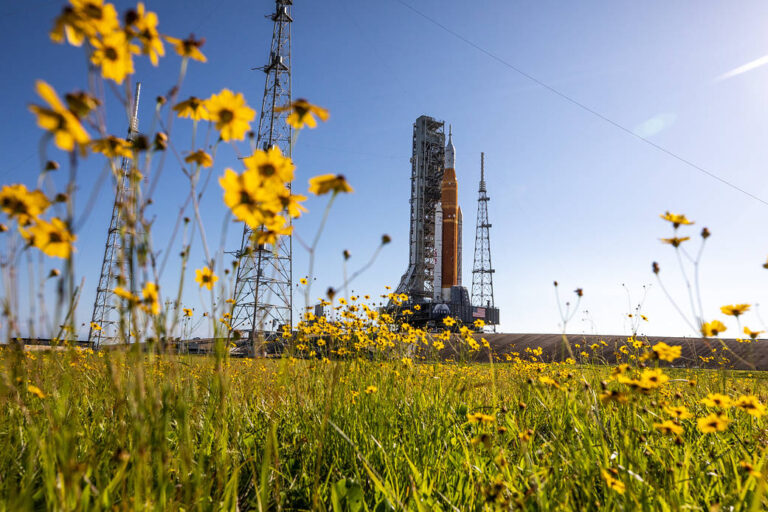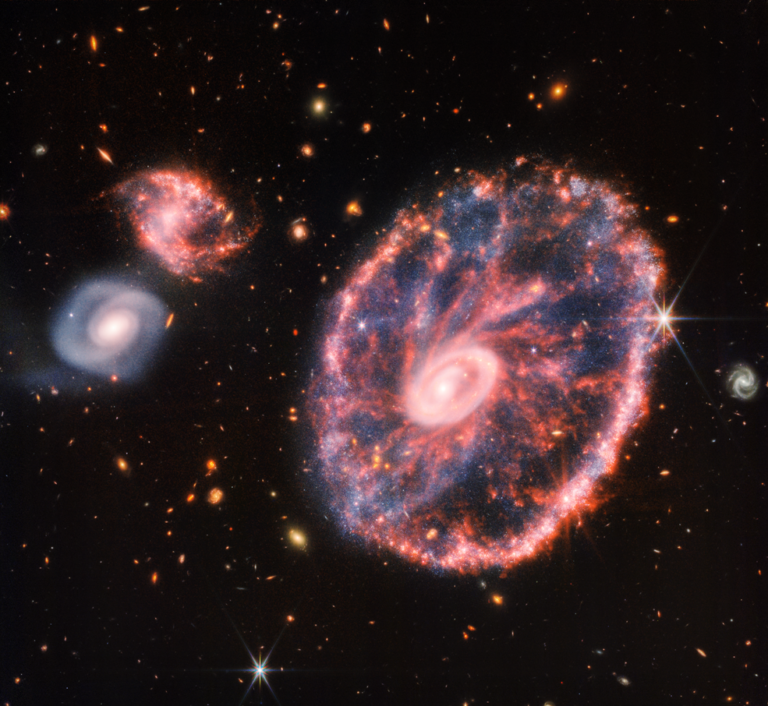肯尼迪航天中心盛开的野花
With wildflowers surrounding the view, NASA’s Space Launch System (SLS) Moon rocket – carried atop the Crawler-Transporter 2 – arrives at Launch Pad 39B at the agency’s Kennedy Space Center in Florida on June 6, 2022. The first in an increasingly complex series of missions, Artemis I will test the SLS rocket and Orion spacecraft as an integrated system prior to crewed flights to the Moon. Through Artemis, NASA will land the first woman and first person of color on the lunar surface, paving the way for a long-term lunar presence and using the Moon as a steppingstone before venturing to Mars. Read more about the Artemis I mission. Image credit: NASA/Ben Smegelsky 2022年6月6日,NASA的太空发射系统(SLS)月球火箭搭载在履带式运输机2上,抵达位于佛罗里达州肯尼迪航天中心的39B发射台,周围环绕着野花。 作为越来越复杂的一系列任务中的第一个,阿尔忒弥斯一号将在载人登月之前测试SLS火箭和猎户座航天器作为一个集成系统。通过阿尔忒弥斯,NASA将让第一位女性和第一位有色人种登上月球表面,为长期登月铺平道路,并将月球作为登陆火星之前的踏脚石。 阅读有关阿尔忒弥斯一号任务的更多信息。 影像来源:NASA/Ben Smegelsky










